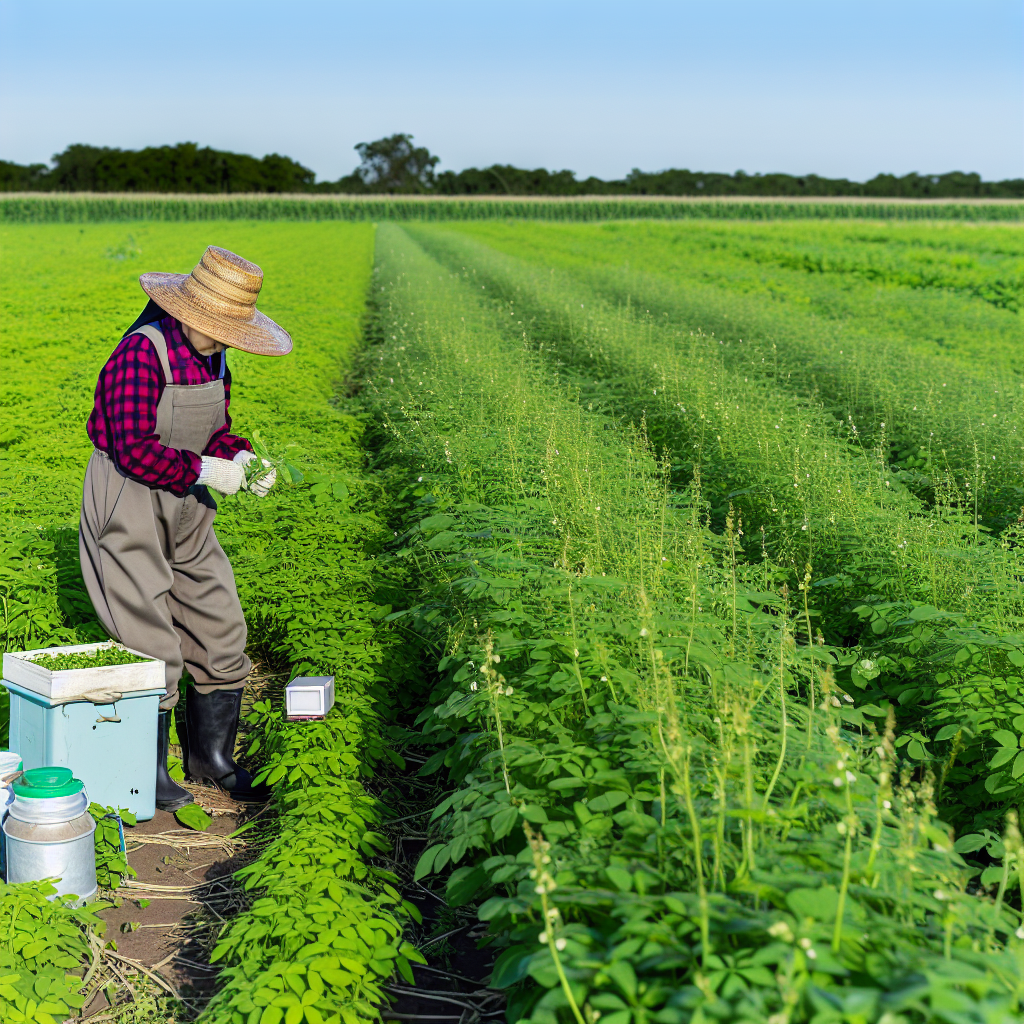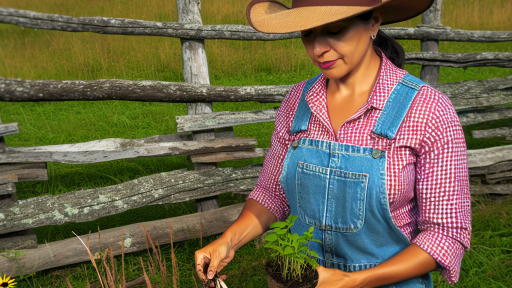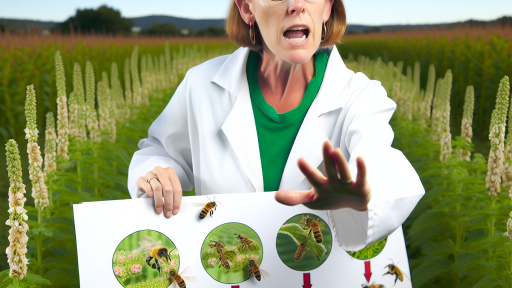Introduction to Integrated Pest Management
Integrated Pest Management (IPM) is a holistic approach to managing pests in agriculture.
It emphasizes sustainable practices and ecological balance.
This method combines various strategies to minimize pest damage.
Farmers can effectively control pests while reducing chemical use.
Additionally, IPM enhances crop health and productivity.
Components of Integrated Pest Management
IPM incorporates several key components to ensure effectiveness.
- Monitoring pest populations regularly
- Using resistant crop varieties
- Implementing biological control methods
- Applying cultural practices to deter pests
- Employing chemical controls only as a last resort
These components work together to optimize pest control strategies.
Benefits of Integrated Pest Management
IPM offers numerous benefits for sustainable farming practices.
First, it reduces reliance on chemical pesticides.
This leads to safer food production and less environmental impact.
Moreover, IPM promotes biodiversity and beneficial organisms.
Farmers experience increased resilience against pest resistance.
Furthermore, IPM can lead to cost savings in pest control measures.
Significance in Sustainable Farming
IPM plays a crucial role in sustainable agriculture.
It aligns with eco-friendly farming principles.
Transform Your Agribusiness
Unlock your farm's potential with expert advice tailored to your needs. Get actionable steps that drive real results.
Get StartedBy minimizing harmful chemical use, farmers support soil health.
This practice also contributes to cleaner water systems.
Ultimately, IPM fosters a balance between agriculture and the environment.
As a result, it ensures food security for future generations.
Reduction of Chemical Pesticide Usage
Minimizing Reliance on Chemicals
Integrated Pest Management (IPM) reduces dependence on chemical pesticides.
This strategy focuses on prevention and monitoring instead of sole chemical use.
Farmers observe pest populations closely to make informed decisions.
By evaluating pest thresholds, they apply chemicals only when necessary.
This method decreases overall chemical pesticide application significantly.
Promoting Safer Alternatives
IPM emphasizes the use of safer alternatives to chemical pesticides.
For example, biological control agents offer effective pest management solutions.
Beneficial insects, such as ladybugs and lacewings, control pest populations.
Cultural practices, like crop rotation, also play a vital role.
Planting resistant crop varieties helps decrease pest damage.
Furthermore, mechanical methods can effectively manage pests without chemicals.
Environmental and Health Benefits
Reducing chemical pesticides positively impacts the environment and public health.
Less chemical runoff protects water sources and aquatic life.
Moreover, lower pesticide exposure improves farm workers’ health.
IPM practices foster a healthier ecosystem and contribute to sustainable farming.
This holistic approach fosters long-term agricultural success without harmful chemicals.
Economic Benefits
Cost-Effectiveness of IPM Practices
Integrated Pest Management (IPM) enhances long-term profitability for farmers.
It reduces reliance on chemical pesticides, lowering input costs.
Additionally, farmers can implement biological controls to manage pests.
Such methods can lead to significant savings over time.
Showcase Your Farming Business
Publish your professional farming services profile on our blog for a one-time fee of $200 and reach a dedicated audience of farmers and agribusiness owners.
Publish Your ProfileInvesting in IPM practices also decreases the likelihood of pest resistance.
Moreover, these practices cultivate healthier ecosystems, benefiting crops.
As a result, yields can stabilize or increase, providing more revenue.
Farmers like Laura Mitchell have reported lower costs and higher profits.
By reducing chemical inputs, IPM improves product quality.
This leads to better market prices due to consumer demand for safer food.
Accordingly, IPM can tap into niche markets that value sustainable practices.
Furthermore, many governments offer incentives to adopt environmentally friendly methods.
Financial support can offset initial investments in IPM technologies.
Transitioning to IPM can demonstrate corporate responsibility to consumers.
Consequently, this strengthens brand loyalty among environmentally conscious buyers.
Since IPM is a holistic approach, it promotes farm resilience over time.
Therefore, farmers are less vulnerable to fluctuations in pest populations.
The cost-effectiveness of IPM practices supports economic sustainability.
Ultimately, adopting IPM can enhance farmers’ financial stability.
You Might Also Like: Organic Farming and Carbon Sequestration Benefits
Enhanced Crop Yields
Impact on Crop Productivity
Integrated Pest Management (IPM) significantly improves crop productivity.
Research indicates that farms utilizing IPM produce higher yields.
This method reduces pest-related crop losses effectively.
Farmers implementing IPM often witness quicker crop recovery from pest damage.
Moreover, IPM enhances the overall health of crops over time.
Improving Crop Quality
IPM not only boosts yields but also improves the quality of crops.
Healthy crops exhibit better nutritional content and flavor.
For instance, vegetables grown with IPM methods show increased firmness.
This results in longer shelf-lives and improved marketability.
Additionally, farmers report reduced pesticide residues in their produce.
Environmental Benefits
Using IPM fosters a more sustainable farming environment.
It minimizes the use of harmful chemicals, benefiting soil health.
Consequently, this approach promotes biodiversity on farms.
More biodiversity leads to natural pest control, further enhancing yields.
Farmers practicing IPM often notice increased populations of beneficial insects.
Cost-Effectiveness
IPM can be a cost-effective approach for farmers.
It reduces the need for expensive chemical treatments.
Farmers see savings in input costs while maintaining productivity.
Over time, these savings can enhance overall farm profitability.
In addition, healthier crops may fetch higher prices in the market.
Discover More: Implementing Recycling Systems on Your Farm
Biodiversity Conservation
Supporting Ecosystem Health
Integrated Pest Management (IPM) significantly supports ecosystem health.
It achieves this by using targeted pest control methods.
These methods minimize harm to non-target species.
Showcase Your Farming Business
Publish your professional farming services profile on our blog for a one-time fee of $200 and reach a dedicated audience of farmers and agribusiness owners.
Publish Your ProfileAs a result, beneficial insects and wildlife can thrive.
Moreover, healthier ecosystems contribute to agricultural productivity.
Promoting Biodiversity
IPM practices encourage diverse farming systems.
These systems include crop rotation and intercropping.
Crop diversity helps to prevent pest outbreaks.
Additionally, it enhances soil health and nutrient cycles.
Thus, farmers who adopt IPM contribute to biodiversity conservation.
Encouraging Natural Predators
One of the key benefits of IPM is the protection of natural pest predators.
These include predatory insects, birds, and other wildlife.
By minimizing pesticide use, these predators can flourish.
Consequently, they help keep pest populations under control.
Implementing Habitat Enhancement
Farmers can enhance habitats for beneficial species through IPM.
Strategies include planting cover crops and conserving hedgerows.
Such measures provide food and shelter for wildlife.
Furthermore, a diverse habitat increases resilience against pests.
Long-term Sustainability
By promoting biodiversity, IPM supports agricultural sustainability.
The approach leads to reduced dependency on chemical pesticides.
In turn, this results in healthier farming environments.
Ultimately, farmers can achieve both productivity and ecological balance.
Thus, IPM represents a forward-thinking method in modern farming.
Discover More: Innovative Practices for Carbon Sequestration in Farming

Soil Health Improvement
Enhancing Soil Ecosystems
Integrated Pest Management (IPM) practices play a vital role in enhancing soil ecosystems.
They promote the use of natural pest-detection methods.
This minimizes the need for chemical pesticides.
As a result, beneficial organisms flourish in the soil.
These organisms include earthworms and beneficial microbes.
Reducing Soil Contamination
IPM strategies effectively reduce soil contamination.
By minimizing chemical inputs, they protect soil organic matter.
Healthy soil retains nutrients more efficiently.
Consequently, farmers experience reduced costs for fertilizers.
Moreover, cleaner soil supports healthier crops.
Promoting Soil Structure
IPM approaches improve soil structure over time.
For instance, crop rotation and cover cropping strengthen soil cohesion.
This leads to better water infiltration and reduced erosion.
Furthermore, improved soil structure enhances root penetration.
As a result, plants can access nutrients more effectively.
Encouraging Biodiversity
IPM enhances biodiversity in agricultural settings.
More diverse cropping systems contribute to healthier soils.
Additionally, they encourage a balance among soil organisms.
This balance reduces the prevalence of harmful pests.
Showcase Your Farming Business
Publish your professional farming services profile on our blog for a one-time fee of $200 and reach a dedicated audience of farmers and agribusiness owners.
Publish Your ProfileBiodiversity fosters resilience in farming systems.
See Related Content: Carbon Sequestration Practices for Sustainable Farms
Resistance Management
The Importance of Preventing Resistance
Preventing pest resistance is essential for sustainable farming.
Pests can quickly adapt to chemical solutions.
As a result, ineffective treatments increase pest populations.
Integrated Pest Management (IPM) offers effective solutions.
IPM combines different strategies to manage pests.
Diverse Techniques Used in IPM
IPM utilizes biological controls, such as beneficial insects.
These natural predators can help keep pest populations in check.
Additionally, cultural practices contribute to resistance management.
Crop rotation disrupts pest life cycles effectively.
This method reduces the likelihood of resistance development.
Rotating Control Measures
Frequent rotation of pesticides helps mitigate resistance.
Different chemical classes target various pest vulnerabilities.
Mixing control methods reduces the chances of adaptation.
For instance, using both chemical and non-chemical methods proves beneficial.
Farmers can implement traps as a monitoring tool.
Monitoring and Assessment
Regular monitoring helps identify pest populations early.
This proactive approach allows farmers to apply targeted treatments.
Behavioral changes in pest populations can also be tracked.
Continuous assessment enhances IPM effectiveness over time.
Educating Farmers
Training farmers about resistance management is crucial.
Knowledgeable farmers implement IPM strategies more effectively.
Workshops, seminars, and online resources can provide guidance.
By increasing awareness, communities can combat resistance together.
Ultimately, educated farmers lead to healthier ecosystems.
Case Studies of Integrated Pest Management
Successful Implementation in Californian Vineyards
In Napa Valley, sustainable grape farming thrived with IPM.
Local farmers reduced pesticide use by 50% through careful pest monitoring.
They adopted beneficial insects to control grape pests naturally.
This approach improved grape quality and reduced costs.
Vegetable Farms in Florida
This region implemented IPM strategies that focused on crop rotation.
Farmers introduced trap crops to lure pests away from main crops.
As a result, farmers saw a decrease in pest populations without heavy chemicals.
This led to higher yields and healthier produce for local markets.
Corn Production in Iowa
A collaborative effort among Iowa farmers showcased the power of IPM.
They utilized soil health management alongside pest monitoring systems.
This method significantly reduced the incidence of corn pests.
Consequently, the region reported improved overall crop resilience.
Apple Orchards in Washington State
Washington apple growers adopted IPM techniques to protect their harvests.
They monitored pest levels and introduced natural predators.
Showcase Your Farming Business
Publish your professional farming services profile on our blog for a one-time fee of $200 and reach a dedicated audience of farmers and agribusiness owners.
Publish Your ProfileThese actions led to a dramatic reduction in insecticide applications.
The orchards reported higher profits due to improved fruit quality.
Rice Fields in Arkansas
Arkansas rice producers embraced IPM methods to manage pests effectively.
They focused on scouting for pests and using resistant crop varieties.
This strategy minimized chemical usage and enhanced sustainability.
Farmers noted improved biodiversity in their fields over time.
Collaborative Research Initiatives
Multiple university-led research projects supported IPM strategies globally.
These initiatives shared knowledge and techniques among farmers.
Farmers gained insights that improved their pest management approaches.
As a result, IPM practices became more widespread and effective.
Additional Resources
AGRI Sustainable Agriculture Demonstration Grant | Minnesota …
Climate-smart agriculture (CSA) is an integrated approach to …




